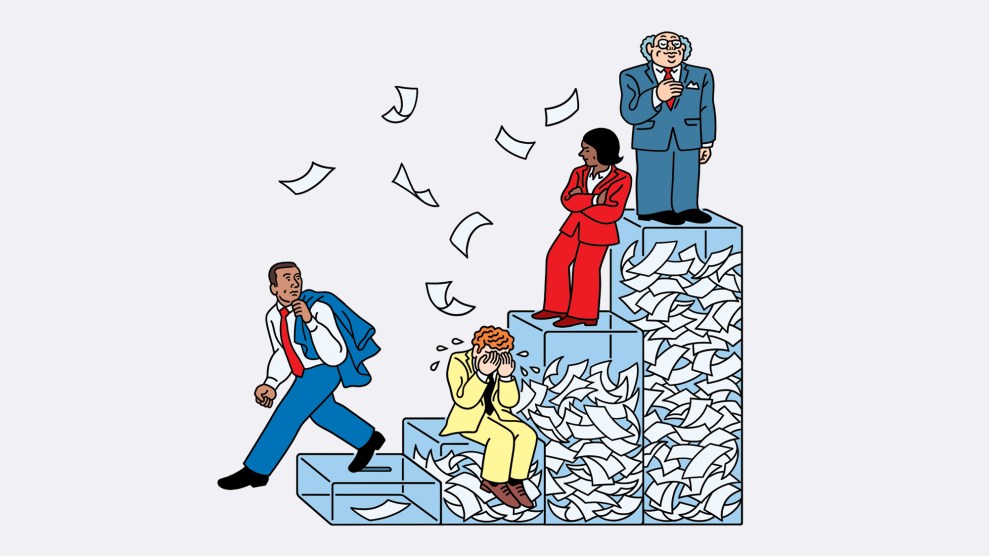It’s hard to believe, but people did clean before the advent of Comet, X-14, and 2000 Flushes. Once upon a grime, they concocted home solutions with simple ingredients like borax, soap flakes, baking soda, and vinegar. Now these cleaning originals have gone retro.
A small but growing faction of the cleaning public swears by such low-tech mixtures. They turn to baking soda for its scouring power as well as its deodorizing prowess. They attack soap scum with vim and vinegar; windows with lemon juice and water. (Consumer Reports even found that water alone works better than half the glass cleaners on the market.)
Madness you say? Blame it on Uncle Sam. Since the early ’80s, state and local government agencies (along with many health and environmental groups) have promoted mix-at-home cleaning recipes through pamphlets, kits, and Web sites. They want Americans to cut back on the millions of gallons of commercial cleaning products used every month, which, they say, contribute to health problems, chemical injuries, and water pollution.
It seems an elegant solution: protect the planet, reduce health risks, and save money to boot (mix-at-homes are dirt cheap). Yet these alternative cleaners are causing quite a dustup.
Manufacturers say government agencies shouldn’t push homemade recipes because, unlike commercial products, they haven’t met testing standards. “Government agencies have a responsibility to put out information based on science,” says Clorox spokeswoman Sandy Sullivan.
Led by the Chemical Specialties Manufacturers Association, a powerful lobby representing the likes of Clorox, Procter & Gamble, and Dow Chemical, manufacturers have tried to discourage government agencies from disseminating information on cleaning alternatives. In California, the state Environmental Protection Agency will no longer provide material on a cleaner—not even a simple vinegar and water mixture—unless it’s been deemed “accurate” and “appropriate” by a technical advisory committee. “We’re basically erring on the side of caution,” says Chris Peck of CalEPA. “Part of it is liability.”
Others say alternative cleaners are simply toxic to corporate profits. In a test conducted at the University of Minnesota, borax (a natural mineral mined in California’s Death Valley) beat out Clorox Clean-Up for removing bathroom grime. “[Homemade cleaners] can hurt sales,” says Ken Steffenson of the Washington Toxics Coalition. “That’s the bottom line.”
But the alternative cleaning faithful are also vulnerable to attack. They have circulated bum recipes, and not all formulas are as effective as they claim. For example, tests have shown that borax, often recommended as a disinfectant, does not get rid of microbial contamination, including salmonella and E. coli. (No mix-at-home cleaners meet the EPA’s testing requirements for disinfectants, but commercial cleaners have failed these tests as well.) The key is to get recipes from reliable sources.
There are also commercially produced “natural” cleaners. Selling points are that they are free of dyes, fragrances, and water pollutants such as phosphates and chlorine. And many are vegetable-based and biodegrade quickly. A number of these products are formulated with the same ingredients as homemade varieties—but sell at premium prices.
Of course, manufacturers of many mainstream cleaners claim that their products are not harmful to people or the planet. “Household products that are prepared by home-cleaning manufacturers are designed to be safe [for people] and safe to go down the drain,” says Sullivan. “Why are options necessary?”
The truth is, there are only loose federal definitions for claims like “biodegradable” and “environmentally friendly.” And because formulas are “trade secrets,” manufacturers only need to disclose a cleaner’s active or pesticidal ingredients (those that kill living organisms such as germs or bacteria) on a label. Yet the inert stuff, often more than 95 percent of what’s in the bottle, can still be toxic to humans and pets.
Whether buying a cleaning product at Whole Foods or Safeway, consumers must depend on the honesty of manufacturers, who may eventually come clean. Until then, people will continue to mix their own tried-and-true cleaners. At least they know what they’re dealing with.
Greener Living:
Head to www.1800cleanup.org to get a list (by zip code) of places to take recyclables, including used motor oil.
Placing two or three plants per 100 sq. ft. in your home can filter out indoor air pollutants such as formaldehyde. Top purifiers include the peace lily, areca palm, lady palm, ficus, and golden pothos.















